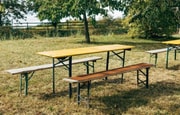Question 1: What is the term for an economic system where the prices of goods and services are determined by the open market and consumers?
Question 2: Where is the headquarters of the International Monetary Fund (IMF) located?
The International Monetary Fund (IMF), which oversees the global financial system and monitors the economic and financial developments of its member countries, is headquartered in Washington D.C., United States.
Question 3: If you were to drill a hole through the Earth and jump in, what would happen to your speed as you fell?
If you were to theoretically drill a hole through the Earth and jump in, gravity would pull you in, increasing your speed until you reached the midpoint. From there, you'd start slowing due to gravity now pulling you in the opposite direction, until you eventually stopped at the other side. This overlooks real-world complications like the Earth's rotation, air resistance, and the heat in the Earth's core.
Question 4: The term “Blue Moon” is used to describe what kind of event?
The term "Blue Moon" usually refers to the second full moon in a single calendar month, an event that typically occurs every two to three years. This usage of "Blue Moon" comes from an article in the March 1946 issue of Sky & Telescope magazine.
Question 5: Which famous fashion designer founded the brand 'Chanel'?
Coco Chanel, born as Gabrielle Bonheur Chanel, was a French fashion designer and the founder of the Chanel brand. She is credited with liberating women from the constraints of the "corseted silhouette" and popularizing a sporty, casual chic.
Question 6: Why do certain plants turn red in the fall?
Chlorophyll, the pigment responsible for giving leaves their green color, breaks down in the fall due to cooler temperatures and less light. As the green fades, other pigments such as carotenoids and anthocyanins become more visible, transforming the leaves into vibrant hues of yellow, orange, and red.
Question 7: How many sides does a dodecahedron have?
A dodecahedron is a polyhedron with 12 faces. The term comes from the Greek words 'dodeka,' meaning 'twelve,' and 'hedra,' meaning 'base,' or 'seat.'
Question 8: When was Google founded?
Google was founded by Larry Page and Sergey Brin while they were Ph.D. students at Stanford University, California in September 1998.
Question 9: If "Mona Lisa" is to Leonardo da Vinci, "Sunflowers" is to?
"Sunflowers" is a series of still life paintings completed by Dutch post-impressionist painter Vincent van Gogh during his time in Arles in southern France in 1888. The sunflower motif is one of the most recognizable in the history of Western art.
Question 10: How is the force of gravity measured?
The force of gravity is measured in Newtons, named after Sir Isaac Newton who formulated the universal law of gravitation. In this system, the weight of an object - which is the force of gravity acting on it - is its mass times the acceleration due to gravity, typically rounded to 9.8 m/s^2 on the surface of the earth.






In capitalism, the decision-making and investment are determined by the owners of the factors of production in financial and capital markets. It is distinguished by its support for free-market competition and private ownership of production assets.